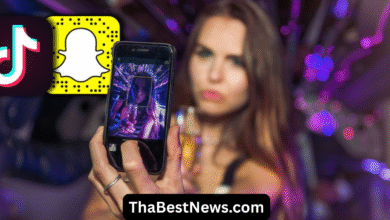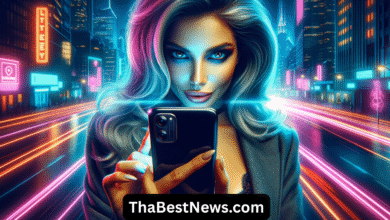Influencers Gone Wild In today’s digital age, influencers have become the new celebrities. They can skyrocket to fame overnight by sharing glimpses of their lives, opinions, or talents on social media platforms. But with this rapid rise comes pressure, temptation, and sometimes, a wild detour from what most would consider “normal” behavior. So, what happens when influencers go wild? Why do they do it, and what does it mean for their careers, followers, and brands? Let’s dive deep into this phenomenon and unravel the chaotic world of influencers gone wild.
The Phenomenon of Influencers in the Digital Age
Influencers are everywhere—from Instagram models and YouTubers to TikTok stars and Twitch streamers. Their numbers have exploded over the past decade, fueled by platforms that reward engagement and visibility. The quest for virality is fierce, and sometimes, playing it safe just doesn’t cut it. To get noticed, many influencers push boundaries and test limits, often stepping into wild territory.
Social media algorithms tend to favor bold, shocking, or controversial content because it sparks conversation and engagement. This creates a cycle Influencers Gone Wild where influencers feel compelled to “go wild” to stay relevant or boost their follower count. It’s a digital stage where the spotlight is bright, but the pressure is even brighter.
Common Patterns of “Going Wild”
So, what does “going wild” actually look like for influencers? There are a few recurring themes:
- Public scandals and reckless behavior: From public outbursts to inappropriate antics, some influencers get into hot water for crossing social norms or legal lines.
- Over-the-top parties and excessive lifestyles: Lavish spending, wild clubbing, and flashing wealth often headline their feeds.
- Provocative and shocking content creation: Nudity, dangerous stunts, or controversial opinions become tools for grabbing attention.
- Clout chasing: Some influencers take big risks to gain fame quickly, even if it means alienating parts of their audience.
The Role of Fame and Validation
At the heart of this wild behavior lies a craving for validation. Social media likes, comments, and shares trigger dopamine in the brain — the “feel-good” chemical. This rush can be addictive, pushing influencers to seek bigger and bigger highs through their content.
Mental health struggles are common, with many influencers dealing with anxiety, depression, or identity issues. The line between genuine self-expression and performing for the camera blurs, sometimes causing them to lose touch with reality.
Memorable Cases of Influencers Gone Wild
We’ve all seen headlines about influencers who crossed the line. Whether it’s a viral meltdown, a scandalous video, or a legal mess, these moments make waves. For example, some influencers have lost sponsorship deals overnight or faced bans from platforms after their wild actions.
The ripple effects extend beyond the influencer—they affect fans who looked up to them and brands that invested in their image. Yet, these cautionary tales also teach valuable lessons about the risks of unchecked fame.
The Dark Side: When Going Wild Backfires
Going wild isn’t always glamorous. It can lead to serious consequences, including:
- Damage to credibility and trust from followers
- Intense backlash from online communities and cancel culture
- Legal troubles or financial losses from lost deals or fines
Many influencers have learned the hard way that a moment of wildness can overshadow years of building a positive reputation.
The Role of Brands and Sponsorships
Brands want influencers who can positively represent their products. When an influencer behaves wildly, brands often pull their partnerships fast to protect their image. This creates a delicate balance—brands must vet influencers carefully and have plans ready to handle crises.
Some brands have even started emphasizing “authenticity” over shock value, seeking influencers who can engage audiences without courting controversy.
Psychological Insights Behind Wild Behavior
The drive to go wild isn’t just about fame. It’s tied to deeper psychological factors like social comparison, fear of missing out (FOMO), and personality traits such as impulsivity. Loneliness and isolation can also push influencers to act out online in ways they wouldn’t in real life.
Understanding these motivations helps us see influencers not just as entertainers but as humans navigating complex emotional landscapes.
The Responsibility of Followers and Social Media Platforms
Fans and followers play a role too. By rewarding wild content with likes and shares, audiences can inadvertently encourage risky behavior. Meanwhile, social media platforms struggle to balance freedom of expression with the need to regulate harmful or inappropriate content.
It’s a complicated dance, with ongoing debates about censorship, responsibility, and the power of the digital crowd.
The Future of Influencer Culture
Will going wild become the norm or a passing fad? As audiences mature and demand more authenticity, there’s hope for a shift towards more mindful influencer behavior. Emerging trends suggest a rise in influencers who focus on mental health, sustainability, and genuine connections rather than just shock value.
How Influencers Can Stay Grounded
Staying grounded is key for influencers who want long-term success. Strategies include prioritizing mental health, building supportive communities, and being honest with followers. Taking breaks from social media and setting boundaries also help maintain balance.
Influencers who manage to stay authentic without resorting to wild antics often build stronger, more loyal audiences.
Conclusion
Influencers gone wild is a fascinating but risky side of digital fame. The pressure to stand out can push creators to extremes, sometimes at great cost. But with awareness, support, and a focus on authenticity, influencers can navigate the spotlight without losing themselves. After all, real influence isn’t about shock value—it’s about connection, trust, and impact.
FAQs
1. Why do some influencers engage in wild behavior?
Many do it to gain attention quickly, Influencers Gone Wild fueled by the addictive nature of social media validation and pressure to stay relevant.
2. Can going wild help influencers grow their audience?
Sometimes it boosts short-term visibility, but it often damages reputation and long-term trust.
3. How do brands handle influencers who cause scandals?
Brands typically sever ties immediately to protect their image and may implement stricter vetting afterward.
4. What mental health challenges do influencers face?
Anxiety, depression, loneliness, and the pressure to perform can heavily impact influencers’ mental health.
5. How can followers support positive influencer behavior?
By encouraging authenticity, avoiding rewarding reckless actions, and promoting respectful, supportive interactions online.





